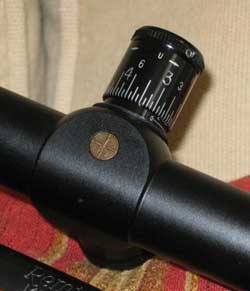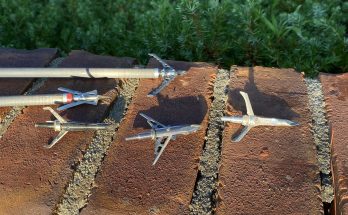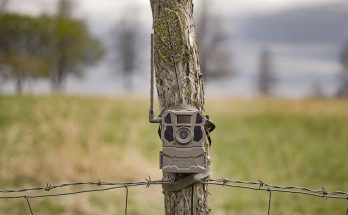(Written in Late 1990’s)
Tactical rifle scopes have to be superior quality sighting instruments to ensure the Soldier or SWAT team can put the bullet exactly where it is intended to go. It must be able to take the pounding and punishment of combat and not fail. It has to have crystal clear optics, precise windage, elevation and focus adjustments, and a reticle designed for the situation the tactical shooter is most likely to encounter. These reticles include red dot optical sites for close encounters, mil dot reticles for long distance requirements, special reticles for intermediate police work, and lighted reticles or night vision scopes for low light conditions.
The first type scope we will review is the long range tactical scope most often used by the military. The majority of shooters choose Leupold Tactical scopes, but there are more tactical models made by Nightforce, Bushnell, Springfield Armory, and others. Tasco was purchased by Bushnell, and they are reportedly going to offer the old Tasco Super Sniper in the near future. Today, most gun shops and big sporting goods stores like Cabelas carry some version of a military scope with all types of target knobs and reticles for hunters.
So what makes a tactical scope different and how could it benefit the sportsman?
Bullet Drop Compensation

Leupold offers several types of tactical knobs with MILDOT reticles, but hunters want precise clicks and bullet drop compensation. Back before Leupold offered the CDS system, I figured out an easy and inexpensive way of making my own CDS knobs. I used my computer to calculate the bullet drop for my 280 Remington and then had the local jeweler to engrave yardage numerals in the correct locations on the dial. Now I have very quick adjustments in the field for shots at 300, 400, & 500 yards. Ten years later, Leupold developed the CDS system. Can not help from believing the ODHA contributed to the idea.
Long range tactical scopes are made for shooting at ranges up to 1000 yards. The adjustment mechanisms for the windage and elevation move the crosshairs precisely time after time. You can count the clicks and know, not guess, how much the crosshair will move. For varmint shooters, trying to hit a small prairie dog at 300-500 yards, or long range target shooters trying to hit the X, you need precise adjustments. A tactical scope will help you get on target quickly and take the guess work out of adjustments. The scopes also have turrets that can be turned by hand without tools, and are well marked (similar to a micrometer) so you won’t forget how much you have moved the knobs. Focus adjustments are available to set the focus at long or very close distances. A typical deer hunting scope has its paralax-free focus set at 150 yards, but using that scope at very close or very long range may not provide you a clear site picture. With an adjustable objective or side focus adjustment, you can focus in the target at any range.
Another great benefit to come from tactical scopes is the Mil Dot reticle. The mil dot reticle provides accurate range estimating system with multi-dot reticle that can be used for hold over and windage without adjusting the crosshairs or “guestimating”. It also gives you precise aiming points for long range shooting. Military snipers can use this type reticle to estimate ranges accurately enough to make first shot hits on man-size targets up to 800 yards using a 308 Winchester caliber rifle. On my last trip to Wyoming on a prairie dog hunt, I used a 22-250 with a 20X scope with dual-X reticle, and standard coin adjustable turrets. Try as I may, I could not connect at 500 yards because at that range, the dog was hidden behind my heavy post and I could not see him or have any reference for aiming. A mil dot or micrometer turrets could have made that shot possible. One other problem is that on the flat prairie, a laser range finder is useless for small targets. I have fixed that problem by sending my scope back to Leupold for a reticle change to a mil dot. $133 and they only had the scope for 5 days.
As great as the Mil Dot reticle is for long range work, it is not for the average deer hunter. The dots are too far apart for range estimation or hold over for ranges from 100 to 300 yards. The Dupex reticle, Burris’ Ballistic Plex or Premier Reticles custom dots are much better for big game hunting. The Leupold Duplex and some other brands of scopes use the a measurement of 1 Mil (about one minute of angle) from the crosshair to the tips of the heavy posts that make up the Duplex. If your crosshair is zeroed at 100 yards on any caliber that shoots at an average velocity of 2900-3000 fps, using the tip of the bottom post for aiming will put you the mark at about 300 yards.
Premier Reticles, Ltd. specialize in custom reticles for Leupold scopes. They have many types of reticles available to compensate for yardage, installation of hold over lines and aiming dots, and other great features to make your Leupold scope better suited for specialized recreational shooting and hunting. Their new Generation 2 Mil Dot reticle adds aiming points every half mil and works for estimating range at any power. They can install custom reticles with aiming dots to coincide with your rifle cartridge/load so you will have aiming dots for every hundred yards out to your max distance. If you are a varmint or long range big game hunter, you should visit their web site and check out the great products and services there.
Burris was first to have one of the best reticles for hunters on the market called the Balistic Plex.
It is similar to the regular Dual-X reticle but the bottom post is replaced with hold over aiming lines that match most standard loads like 3006 zeroed at 100 yards and most magnum loads zeroed at 200 yards. The plex on the horizontal zero line can also be used for windage adjustments. Burris also offers a Mil Dot and Tactical scopes as well. For 2004, Leupold has also added two similar reticles called the Boone & Crockett and the Varmint Hunter. For my report on the Leupold Mark 4 3.5x10x40 LR/T M3 Long Range Tactical scope,click here.
Leupold now has the CDS system in addition to the BDC reticles but we will cover the CDS in a different review.
Close encounters of the worst kind require a different type rifle and scope.
Police and Military rely on the AR15 most of the time and they usually opt for some type of optical site with little or no magnification. One of the best optical sites for this type of work is the Trijicon Reflex. This site readily adapts to any Weaver type mount and and can be used in low light conditions as well as daylight. The Trijicon Reflex uses fiber optics to provide an orange dot or triangle for sighting in daylight and a trideum lamp that provides power for that same orange dot in low light conditions. Dots come in 3.5 or 6.5 MOA sizes, and a new inverted “V” is available for more precise aiming for longer shots. It has internal elevation and windage adjustments and comes with a variety of mounting systems. This close range sight is great for hunters and target shooters too. The Reflex (or other red dot scope) is a great sight for short range rifles, muzzleloaders, turkey guns, and pistols. It is rugged, light weight, compact and you never have to worry about the battery in a Trijicon. Of all the dot sights on the market, this is one of the most rugged and dependable.
Related Post Leupold VX-R Patrol Rifle Scope




